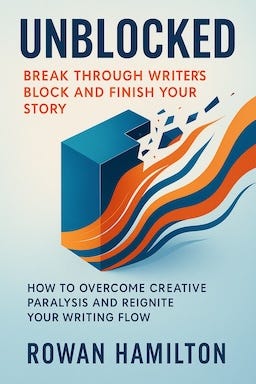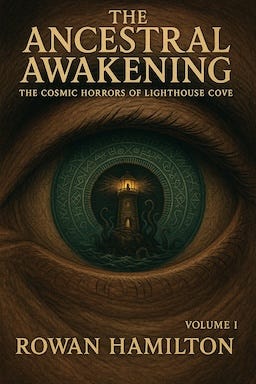Why the best characters make you question everything you believe
The Art of Writing Characters Who Challenge Your Own Beliefs
The characters who haunt us longest are the ones who make us uncomfortable.
Not because they’re monsters in the traditional sense, but because they force us to examine beliefs we’ve held sacred, truths we’ve never questioned, and perspectives we’ve spent lifetimes avoiding. The most powerful fiction doesn’t just entertain readers. It challenges, unsettles, and makes them reconsider fundamental assumptions about the world. This transformation begins when writers dare to create characters who embody viewpoints that contradict their own deeply held convictions.
Here are three techniques for crafting characters who will challenge both you and your readers.
Give Your Antagonist the Better Argument
Your villain should win every debate.
This doesn’t mean they’re right, morally or otherwise. But it means their logic is airtight, their reasoning is compelling, and their worldview has an internal consistency that makes you question your protagonist’s stance. The moment you find yourself nodding along with your antagonist’s monologue, you’ve succeeded in creating a character with genuine depth.
The key is intellectual honesty. Research the opposing viewpoint as thoroughly as you would defend your own position. Read the philosophers, the manifestos, the academic papers that support beliefs you instinctively reject. Let your antagonist cite real arguments, not strawman positions designed for easy dismantling. When readers finish your story, they should understand exactly why someone intelligent and thoughtful might hold beliefs opposite to their own.
The horror of a truly compelling antagonist isn’t in their cruelty but in how close they come to being right.
Create Characters Whose Pain You Don’t Understand
Write someone whose suffering feels alien to you.
This technique forces you beyond empathy and into the more difficult territory of understanding without identification. Perhaps they’re grieving a loss you’ve never experienced, wrestling with an identity you can’t inhabit, or facing systemic oppression you’ve only observed from the outside. The challenge isn’t to appropriate their pain but to render it with such specificity and care that readers feel its weight regardless of their own experiences.
Start by listening more than inventing. Consume memoirs, oral histories, and interviews from people whose lives diverge sharply from your own. Pay attention to the details that surprise you, the reactions that don’t match your assumptions, the moments of joy or despair that emerge in unexpected contexts. Then translate those truths into fiction without flattening them into comfortable narratives.
Your discomfort while writing these characters is proof that you’re reaching beyond your limitations.
Let Morally Reprehensible Characters Be Fully Human
The most unsettling stories give monsters complete inner lives.
Not to excuse their actions or ask for sympathy, but to acknowledge the disturbing truth that terrible people are still people. They have morning routines, favorite songs, and moments of genuine tenderness, alongside their capacity for cruelty. This doesn’t make them sympathetic; it makes them terrifying in their humanity. When readers recognize traces of themselves in your most morally compromised characters, you’ve succeeded in holding up an uncomfortable mirror.
The practice here demands brutal self-examination. What parts of yourself would you rather not acknowledge? What impulses have you felt but never acted upon? What rationalizations have you constructed to maintain your self-image? Channel those shadows into your most problematic characters. Give them the same complexity, the same contradictions, the same capacity for self-deception that we all possess.
The void between who we believe we are and what we might become under different circumstances should terrify us all.
Your Next Step Into Uncomfortable Territory
Here’s your assignment: Write a scene from the perspective of someone whose core belief system opposes yours on an issue you care deeply about.
The rules are simple. First, you cannot make this character stupid, evil, or a caricature. Second, they must have at least one moment of genuine vulnerability that is unrelated to their controversial beliefs. Third, by the end of the scene, you should understand their worldview well enough to articulate it to someone else, even if you still disagree with it fundamentally.
Set a timer for 20 minutes. Choose your opposing viewpoint. Write the scene without censoring yourself or making the character more palatable than they would realistically be.
The goal isn’t to change your own beliefs but to strengthen your writing by refusing to take the easy path. When you emerge from the shadows of perspectives you’ve avoided, you’ll find your fiction has grown teeth. Your characters will breathe with the complexity of real humans rather than the simplicity of ideological props.
The most honest writing lives in the space between your convictions and your doubts.
Stop protecting yourself from complex characters. Stop shielding your readers from perspectives that unsettle. The stories that linger are the ones that make us question whether we truly know ourselves at all.
The void between certainty and doubt is where the most compelling fiction dwells.
Was this challenge helpful? Would you like more? Are you a writer struggling to write? Have you been staring at the blank page for too long?
You may want to check out my first book, “Unblocked: Break Through Writer’s Block and Finish Your Story,” now available at Amazon Kindle and Kindle Unlimited. It’s not about forcing yourself to write. It’s about understanding why you can’t.
If this made you curious to read any of my work, visit my Amazon Author Page and pick up my collection of ten interconnected cosmic horror short stories. FREE with a Kindle Unlimited membership.
PS… If you enjoyed my writing tip, would you take 6 seconds to share it with a friend?
It helps grow our community of horror writers. You earn phantom applause from beyond the veil whenever you share using the button below!
And finally, I’d love your input on making the newsletter even more helpful for you!
So, please leave a comment with the following:
Items you’d like me to cover in future editions
Your most significant takeaway from this post
I read & reply to every single one of them!




